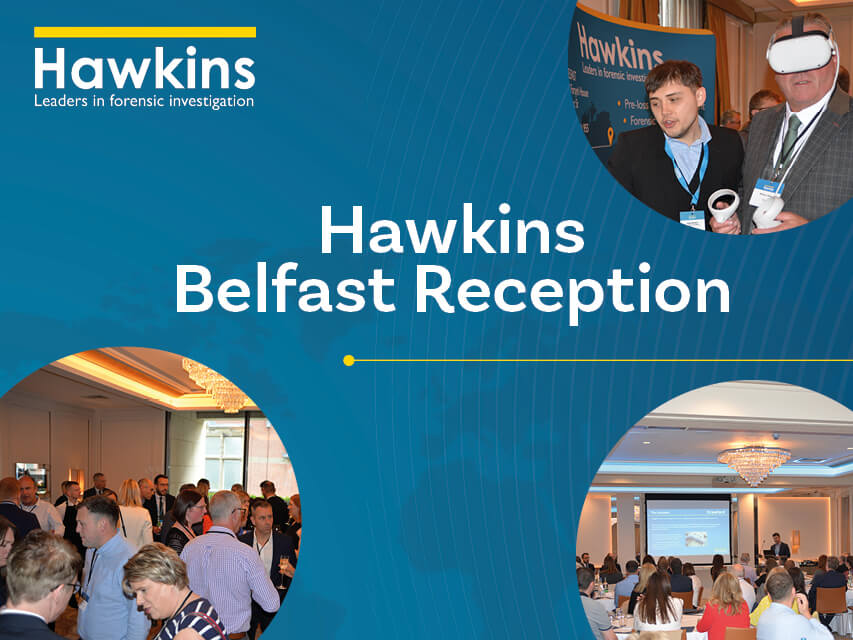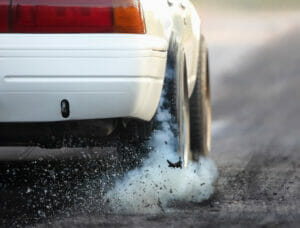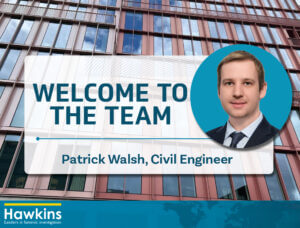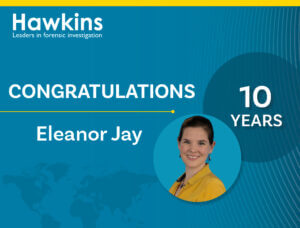It was a pleasure to host our inaugural Belfast reception on the 5th September, at the prestigious Merchant Hotel.
Chartered Engineer and Regional Manager of our Dublin and Belfast Offices, John Holland, welcomed guests and shared details of the recent expansion, to strengthen our presence and service offering in the region. He then handed over to colleagues to deliver a CILA-accredited CPD presentation.
The presentation took a deep dive into a fictional Major & Complex Loss incident which encompassed a personal injury claim following a structural collapse on a construction site, which led to further unforeseen consequences, highlighting the twists and turns that such investigations can take. Presenters included Hawkins experts, and guest speakers Craig Faulkner of Crawford & Company and Catherine Carton, of Carson McDowell.
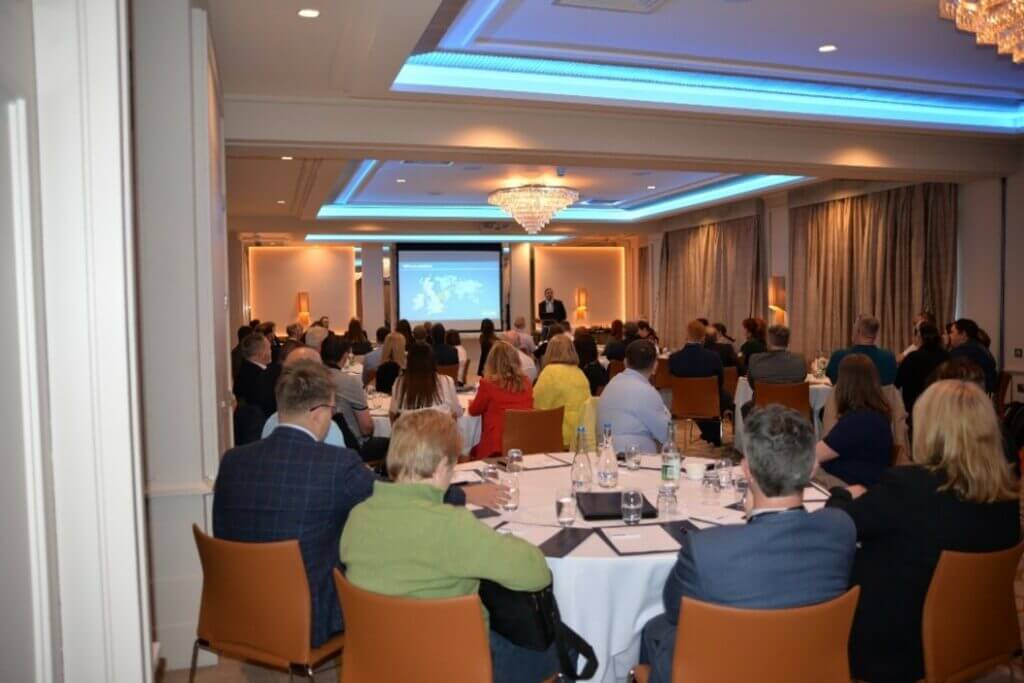
Craig opened the presentation to set the scene on our fictitious incident of the failure of a mast climbing working platform (MCWP) which resulted in a substantial claim for personal injury. He highlighted a further potential claim related to a road traffic collision (RTC), which was allegedly caused by cladding materials being strewn across the road, as a result of the original mast climber failure.

Personal Injury expert, Jon Watkins explained his approach to the initial investigation. This included an early site visit while the scene was intact, assessing the relevant regulations, interviews with site management, and a review of Health & Safety procedures and inspection logs.
Being an A2 Certificate of Competence (A2CofC) certified drone pilot, Jon is able to use his drone to capture ariel views of difficult-to-reach places. Jon explained that the drone images he could capture showed that the support system had not failed, the masts had not buckled and despite the collapse, the working platform had not failed. He concluded that it may have been an internal failure and upon providing an initial report, outlined the need for further work from a materials expert to find the root cause of the failure.
Jon introduced, Dr Christabel Evans, who was tasked with identifying if the failure was a result of a materials defect, and whether the incident could have been prevented. Giving the audience an overview of how mast climbers work, Christabel explained that the mast climber relies on a rack and pinion system to move the platform up and down. Her investigation included a review of:
- The maximum rated capacity of the platform; which is dependent on even loading across the platform.
- The potential for overloading. If the load had been concentrated on one side, it is possible that the structure didn't buckle, but one or both pinions had become overloaded.
- Other possibilities including design issues, poor material selection, or lack of maintenance.
Christabel revealed that two fractured pinions were found on the building site beside the mast climber. The lower pinion was covered in hardened cement which indicated that it had been lying on the ground for some time, failing before the incident occurred. Following the fracture of the lower pinion, the left-hand side of the mast climber failed and tilted steeply downwards towards the ground. This put undue pressure on the upper pinion, as it had to carry all the load. Examination of the upper pinion indicated that it had subsequently cracked and eventually failed from fatigue.
Christabel noted that in cases like this, it is common for the health and safety executive (HSE) to undertake their own investigation. On these occasions, Christabel will attend the site with the HSE engineer. It is not unusual for the HSE to retain crucial components of a case, meaning that an investigator may not have access to these for weeks or even months after an incident. This highlights the importance of instructing a Hawkins forensic investigator who can attend site quickly and complete an examination before items are removed.


Solicitor, Catherine Carton explained how the findings from the Hawkins investigation enabled her to establish where liability sat between each party, including the manufacturer of the mast climber, the cladding subcontractor, and the main contractor. Catherine then led the discussion on to the secondary incident, being the RTC, alleged to have been caused by the fallen debris.
Gavin Dunn introduced his role as an RTC investigator starting with a site visit to assess the scene and collect relevant evidence while it is still intact. He surveyed key positions and distances, assessed lines of sight, and completed a video drive-through and 3D laser scan to capture the scene in detail. With this information, Gavin was able model the orientation of the car at impact and approximate its path.
A typical RTC investigation may include a vehicle inspection to assess the damage, extraction of airbag data and dashcam footage, and their review, together with police and witness evidence. In this case, having found that the car had gradually drifted off the road and that the driver did not steer or brake to avoid the debris, he requested that Digital Forensics expert, Callum Hogan, investigate whether there were any other plausible reasons as to why the car had veered off course.
Callum acquired a ‘digital forensic image’ of the driver’s mobile phone, which is a forensically sound copy of all the data stored in the phone, including deleted data. He extracted all user-generated data in the minutes before, during and after the collision, to determine whether the mobile was in use. The data confirmed that a call was in progress at the point of impact and was initiated by the driver using the handset rather than the in-vehicle communication system.
A review of messages uncovered two text messages sent by the driver minutes before the RTC occurred, with the second sent three seconds before the point of impact. Both messages were manually typed on the mobile telephone.
Callum also accessed a map application to see if an active route was planned and what the destination was, to establish a timeline of events. He concluded with clear evidence that the driver is most likely to have been distracted while driving, through use of their phone.
Catherine and Craig closed the presentation with their summaries on the advice that they would provide to the insurers and where liability was apportioned.




Guests were then invited to join the drinks reception, which provided an opportunity to meet our investigators, examine exhibits from real Hawkins’ cases and take a tour of a real case using a virtual reality headset, demonstrating how Hawkins uses drones and photogrammetry in our investigations.
We would like to thank all our guests who attended the reception and hope it offered an insightful perspective into our expertise and how we conduct investigations.
You can view all our upcoming events on our website.
